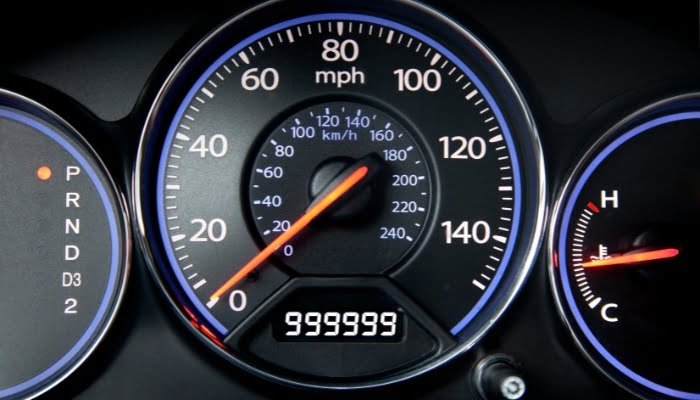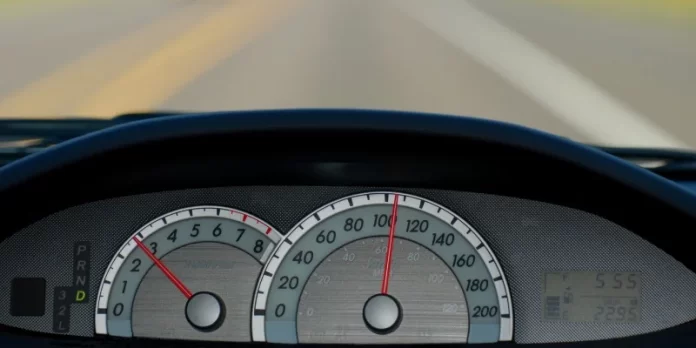Reading an odometer might seem like a straightforward task.
However, with the complexities of modern vehicles and the myriad factors to consider, understanding your vehicle’s odometer can offer more insights than just the distance traveled.
In this article, we’ll guide you through the intricacies of reading an odometer, addressing digital and mechanical types, their crucial role in understanding a vehicle’s health, and more.
So, sit back and get ready to become an expert on the topic!
The Basics of an Odometer
Let’s start by answering the question: what is an odometer? Simply put, an odometer is an instrument used to measure the distance traveled by a vehicle.
It may be electronic or mechanical and is usually located on the vehicle’s dashboard.
The unit of measurement can vary, depending on the country and the vehicle’s design, but it’s typically in miles (mi) or kilometers (km).
Digital vs. Mechanical Odometers
Before we delve into how to read an odometer, let’s differentiate between the two main types: digital and mechanical.
Digital Odometers
Most modern vehicles come equipped with digital odometers, offering a clear and easy-to-read interface. Digital odometers use an electronic display to show the total distance traveled by the vehicle.
They provide more than just mileage figures – you’ll also find trip meters and average fuel economy, among other metrics, with a few button presses.
Mechanical Odometers
In contrast, mechanical or analog odometers use a series of rotating drums or dials to display the distance.
These odometers, typically found in older models, might require a bit more attention to read accurately, especially when the numbers are between transitions.
Note:
While digital odometers are more prevalent in modern vehicles, many enthusiasts appreciate the nostalgia and analog appeal of mechanical odometers.
You can understand more about the evolution of vehicle instrumentation in our guide on car RPM meaning.
Now that we’ve defined the types of odometers let’s explore how to read them.
Reading a Digital Odometer
Reading a digital odometer is generally straightforward, thanks to the clear display. The main number shown is the total distance the vehicle has traveled since it was manufactured.
For instance, if your odometer displays “123456,” it means your vehicle has traveled 123,456 miles or kilometers, depending on your vehicle’s unit of measurement.
Some digital odometers also feature additional figures, such as “TRIP A” or “TRIP B.”
These are trip meters, measuring the distance traveled since they were last reset, useful for tracking mileage for business trips or monitoring fuel efficiency.
Tip:
To reset your trip meter, look for a button or knob on your dashboard labeled “trip” or “reset.”
If you’re having trouble finding it, check out your vehicle manual or visit our article on “How to Install a Performance Chip” for a general idea about dash interfaces.
Reading a Mechanical Odometer
While reading a mechanical odometer might be a tad more complex than its digital counterpart, it’s not a daunting task.
Each drum or dial in a mechanical odometer represents a digit, and they turn as the vehicle travels.
Reading from left to right, the digits represent (in a six-drum setup): hundreds of thousands, tens of thousands, thousands, hundreds, tens, and ones.

Reading Your Odometer: Going Beyond the Numbers
Understanding the Mileage
Your odometer is more than just a number, it’s the heartbeat of your car, a living log of its journey.
The digits on the odometer disclose a narrative – they whisper tales of long road trips, daily commutes, and memories in the making.
On the more pragmatic side, these figures also provide vital insights into your vehicle’s health and maintenance needs, much like how engine sounds can indicate potential issues.
But, how do you actually make sense of these numbers? Let’s find out.
Types of Odometers
Primarily, you’ll encounter two types of odometers in most vehicles: mechanical and digital.
Mechanical odometers have been the mainstay for several years and are generally reliable. They use a complex series of gears to increment the number displayed.
In contrast, digital odometers are a more recent innovation, offering an easy-to-read display that’s often paired with additional information about the vehicle.
Some modern vehicles even allow the driver to switch between digital and analog displays.
Regardless of the type of odometer, understanding how to read it is crucial for vehicle maintenance, like knowing when to replace your shocks and struts.
Decoding the Digits
An odometer typically displays the total miles or kilometers that your car has traveled. This total is presented as a series of digits, each one representing a different position in the total mileage.
For example, consider an odometer reading of 123,456. The rightmost digit represents the one place, indicating how many full miles your vehicle has driven.
The next digit to the left is the tens place, followed by the hundreds, and so on. This is similar to how we read most numbers in everyday life.
Remember that most modern cars will track miles or kilometers down to the tenth, but the odometer usually only displays the full miles or kilometers driven.
However, some digital odometers will display this extra information in a separate area of the display.
Knowing how to interpret these figures can be beneficial in various scenarios. For instance, knowing the miles covered by a Toyota Camry can give you a fair estimate of its condition and remaining lifespan.
Checking Your Trip Meter
In addition to the main odometer, many vehicles include one or more trip meters. These can be reset at any time, allowing you to track the distance driven on a particular trip or over a specific period.
For example, you might reset the trip meter before a road trip to see exactly how far you’ve driven.
Alternatively, you can use the trip meter to track the miles driven between oil changes, which is an essential part of car maintenance, just like ensuring your car battery charges while driving.
So, there you have it – an easy guide to decoding the secret language of your odometer. But, this is just the beginning.
Up next, we’ll delve into the implications of high mileage, how to detect odometer fraud, and much more. Stay tuned!
Final thoughts
Reading your odometer can be very tasking for some car owners, especially new car owners and those who do not know how to do so.
After careful study of this article, if you’re one of such vehicle owners, your questions must have been answered.
If you still encounter difficulties reading your vehicle odometer, consult your car dealer for professional aid.



